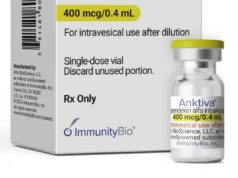The path to value-based care is arduous. For health plans, their ability to manage care, assess quality, lower costs, and streamline reporting is directly impacted by access to clinical data. For providers, the same can be said due to their lack of access to claims data.
Providers and health plans are increasingly demanding integrated claims and clinical data to drive and support value-based care programs. These organizations know that clinical and claims information from more than a single organization is the only way to get a true picture of patient care. From avoiding medication errors to enabling an evidence-based approach to treatment or identifying at-risk patients, the value of integrated claims and clinical data is immense — and will have far-reaching influence on both health outcomes and costs of care over time.
On July 30, Medicare announced the Data at the Point of Care pilot to share valuable claims data with Medicare providers in order to “fill in information gaps for clinicians, giving them a more structured and complete patient history with information like previous diagnoses, past procedures, and medication lists.” But that’s not the only example. To transition from fee-for-service to value-based care, providers and health plans have begun to partner with health data networks to access integrated clinical and claims data:
Health plan adoption of integrated data strategy
A California health plan is partnering with one of the largest nonprofit health data networks in California, to better integrate clinical and claims data. Working with partners nationwide, this health plan currently uses the aggregate clinical data from more than 7.6 million members to close gaps in care; and eliminate fraud, waste, and abuse in the healthcare system. In fact, they receive clinical updates in near real time — more than 100,000 per month — from partners nationally that enable them to streamline care. Moving forward, this health plan envisions more specific and valuable applications of clinical and claims data integration, including the ability to better coordinate care for vulnerable patient populations and to also address a significant increase in quality reporting requirements through Medi-Cal in California.
Providers leveraging claims data to understand patient medication patterns
Doctors using advanced health data networks typically see a full list of patients’ medications, derived from claims, when they treat them. With this information available, doctors can avoid dangerous drug to-drug interactions when they prescribe new medications. After a visit, they can also follow up and see if a patient actually filled a prescription and is still taking it.
The issue of medication non-compliance – patients not picking up their prescription and taking as directed by their clinician – negatively impacts patients and costs our healthcare system millions of dollars. It’s a leading cause for an estimated 125,000 avoidable deaths each year and $100 billion annually in preventable healthcare costs. By using integrated claims and clinical data to shine a light on medication patterns, provider organizations are benefiting patients and helping make healthcare more affordable.
The business case for integrating clinical and claims data is clear. Providers, health plans, and patients all benefit from uniting these data sets. By partnering with a smart, secure, and collaborative health data network, providers and health plans can now access integrated claims and clinical data and more effectively transition to value-based care.
Picture: Getty Images, Peter Howell








